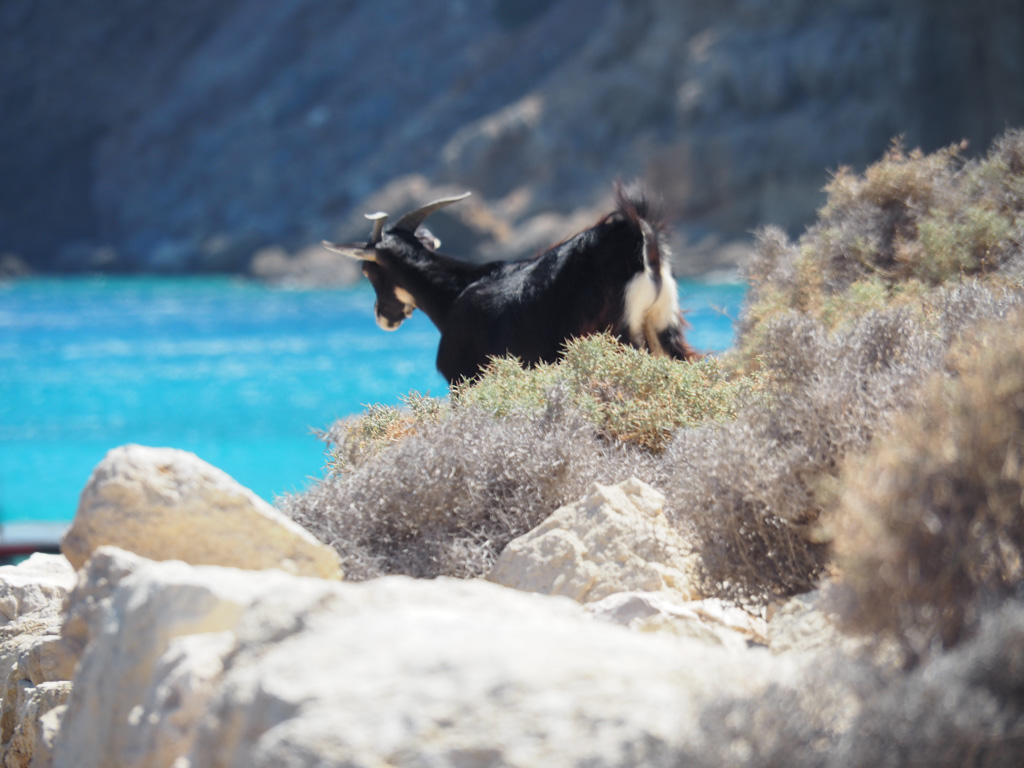Here we are again with a look at some unique and lesser known destinations in the Dodecanese, ideal for the traveler seeking a special experience. This island chain boasts enormous biodiversity, an array of architecture styles, a bold naval history, and a choice of magnificent natural settings.
Nisyros
Did you know that Greece has an active Volcano? Actually there are several – there’s also one at Methana and on the islands of Santorini and Milos in the Cyclades.
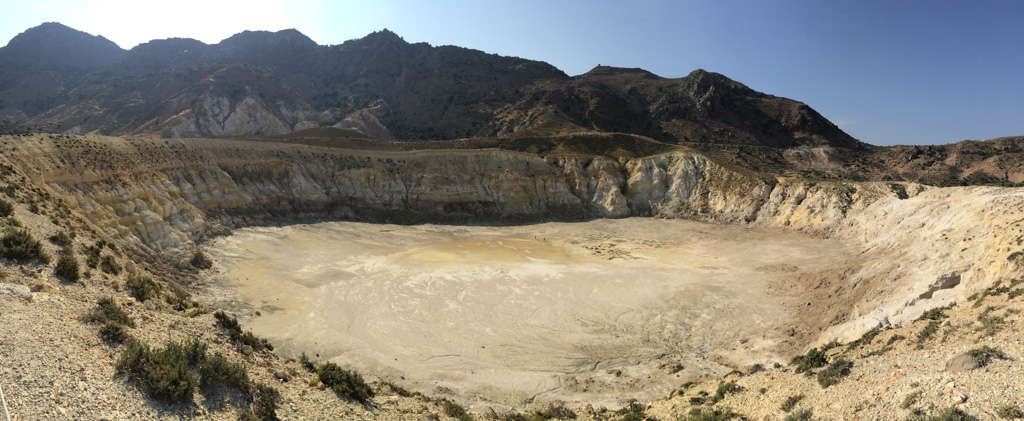
But the one in Nisyros has one of the world’s largest hydrothermal craters. It shapes the landscape like a dream, giving it unique geological features. You can don some sturdy shoes and actually visit the crater itself – the Stefanos. You’ll see steam escaping from holes and then an otherworldly landscape will open before you.
Those who want more evidence of the volcanic action occurring below the crust of this fascinating island can visit the thermal therapeutic springs. In Mandraki, a municipal spring flows with thermal waters. The stone buildings, of the previous century, have a simple elegance. The springs of Loutra are the best known, and there are also springs at the village of Palos, next to the springs of Thermiani.
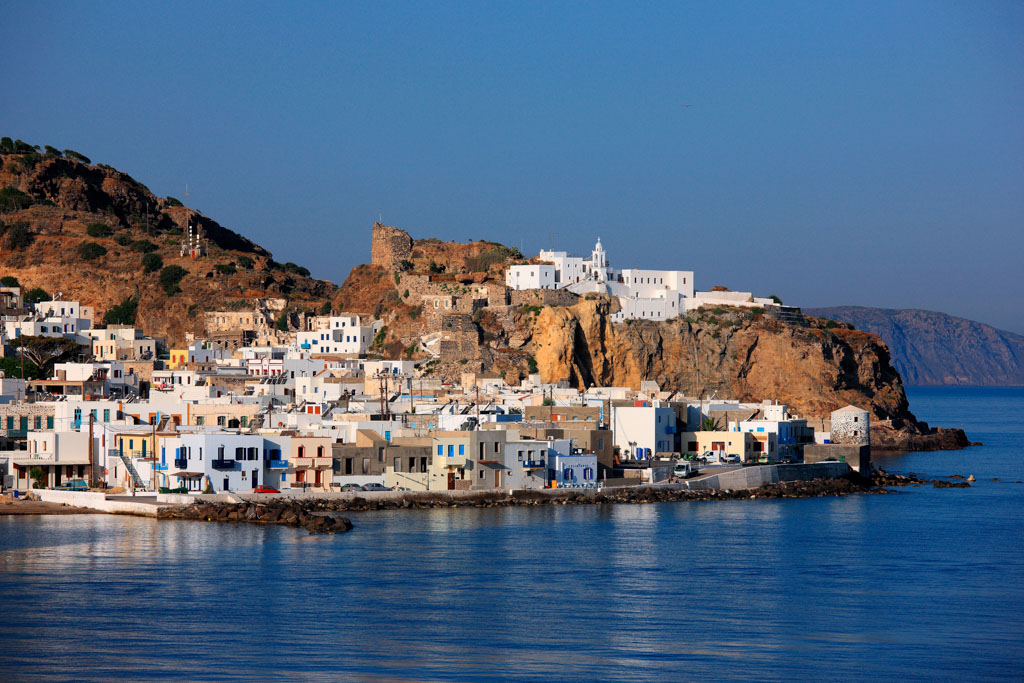
Nisyros itself is a magical traditional island. The central square of Nikia is surrounded by elegant island architecture of blue and white, an elaborate campanile, and on the ground an elaborate mosaic of smooth sea pebbles – a common feature in the small Dodecanese Islands. Mandraki, the main town, is a place full of local life throughout the year- just the sort of place for the traveler who seeks an authentic connection to a destination.
Tilos
Petite Tilos, between the much larger Rhodes and Kos, has a tiny secret- the island is known for the Pygmy Elephants who once lived here. The small elephants were here until about 3500 BC, and thought to be the last elephants living in Europe.
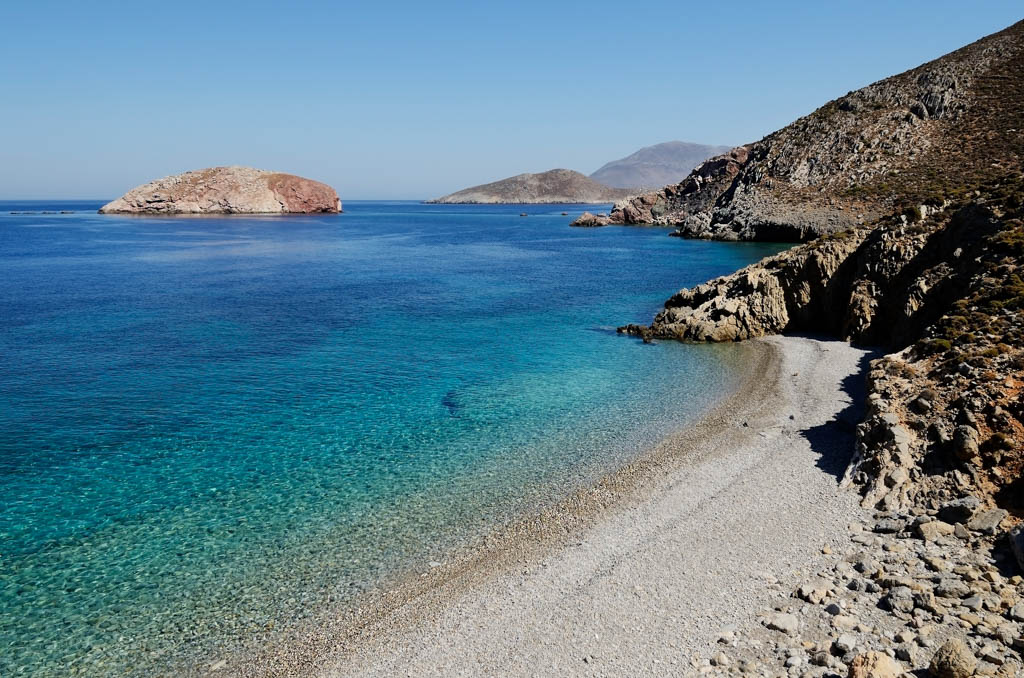
Why were they small? Tilos is small- in order to thrive on the island, they had to adjust and evolve slowly to fit the scale of their habitat, finally reaching a height of about 1,20-1,50 meters. One can learn all about these earlier inhabitants at the Elephant Museum in Megalo Chorio.
Speaking more of nature, Tilos is a leader in sustainability initiatives. With their “Just Go Zero” program, the island seeks to eliminate waste with conscientious recycling programs. This very much impacts the island experience, conscientious and close to nature. The nature here deserves such care- Tilos is also a haven of rare flora and fauna, starring a dozen varieties of orchid (8 species of Ophrys and 4 species of Serapias), Jerusalem sage (Phlomis floccosa), the Medick lucerne (Medicago heyniana Greuter), the Mullein (Verbascum), and the Bellflower (Campanula simulans Carlström). As to Fauna, the shrubby landscape is home to hedgehog and rabbits and in the skies overhead are the majestic Elenora Falcon and the Bonelli Eagle. In the sea are the common and striped Dolphin, perhaps making an appearance on a boat trip, as well as the protected Monachus Monachus – the Mediterranean Monk Seal. Divers too will love the sea life – fish in abundant variety, and a sea floor teaming with crustaceans and sponges, which have played so significant a role in the economy of some dodecanese islands.
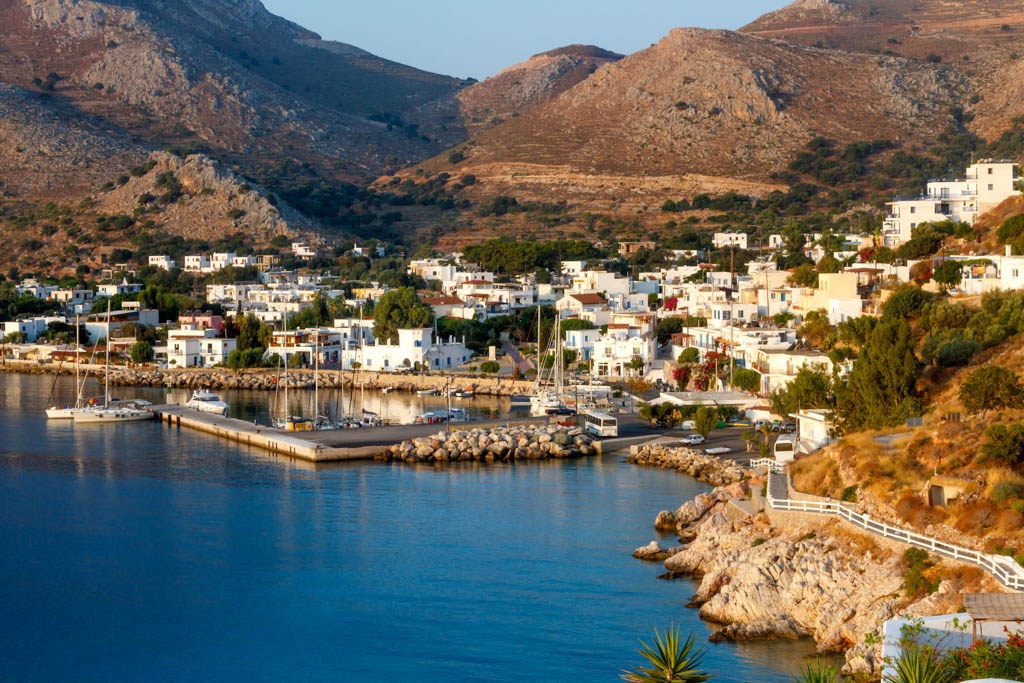
Amid the natural splendor there is architectural and historical interest too. Anyone familiar with the history of the Dodecanese will know that the Knights of St. John- the Knights Hospitaller who were quartered on Rhodes (the Knights of Rhodes) and then later became the Knights of Malta – were a strong influence on the Dodecanese, protecting the islands from Arab and Ottoman invasion, and building grand fortresses to do so. One of these is on Tilos, of the late Byzantine period. There was once an entire village inside, as people sought protection not just from invading forces but from pirates as well. From its hilltop location north of Megalo Chorio, it is particularly spectacular at dusk.
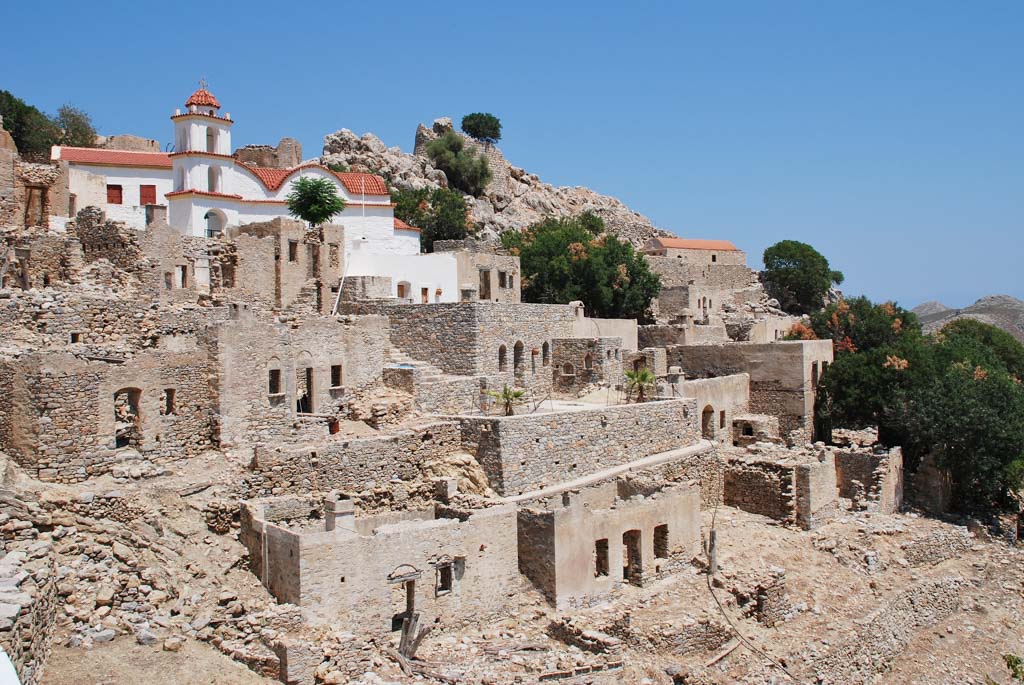
Kasos
The smallest and most remote of the Dodecanese Islands, beautiful and rugged Kasos will steal your heart. Even by Greek standards, the Kasiots are extraordinarily welcoming.
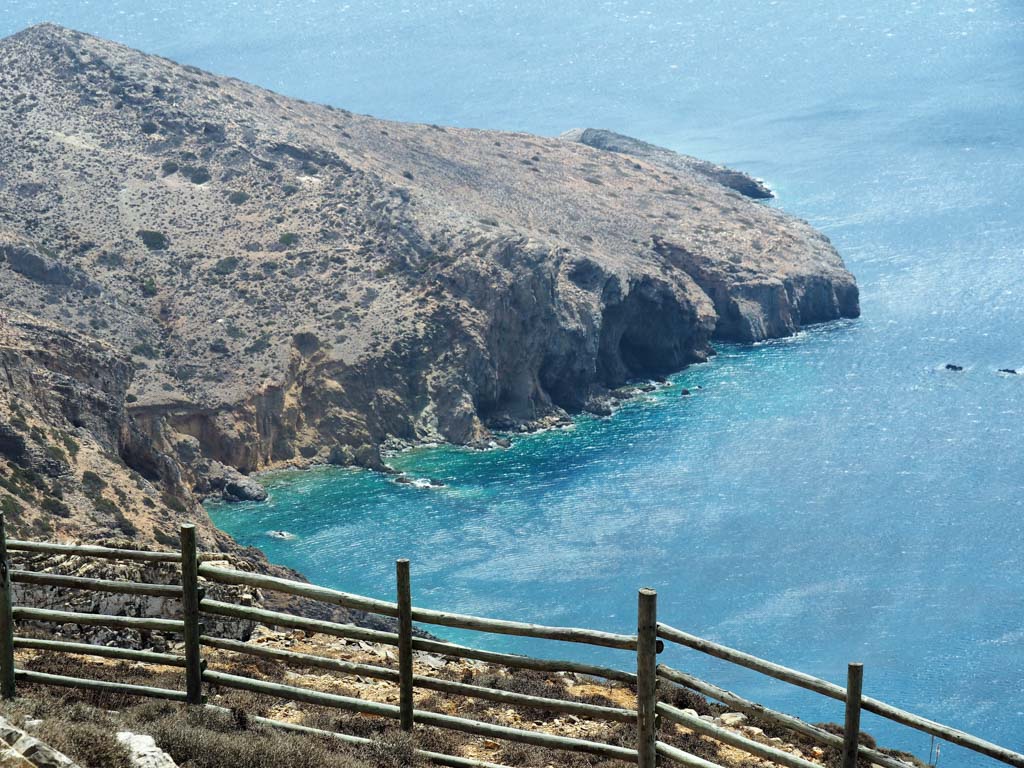
Kasos has an impressive history of seafaring, and also of courage. The Kasiots contributed 700 ships, all of their wealth, and not least all of their courage to the cause of a free Greek nation. Their valor yielded successes, and then a brutal retaliation. This is a place of bravery and honor.
It is also a place of faith- this remote and sparsely populated island, swept by invigorating winds, with a rugged and mountainous landscape, is dotted with some 100 churches- found even on the remotest peaks. The churches are an architectural treasure- with red domes of Porphyry making such a beautiful contrast with the blue Aegean skies. Elaborate churches in the towns are topped with grand campaniles. One even has a traditional pebble mosaic floor.

Hikers will love it here- there are few places as unspoiled as Kasos, which has small roads and dirt roads and very little traffic. Tranquility abounds in the rugged landscape.
And they will be bound to have an appetite after hiking, which is a good thing; cuisine expresses the spirit of the island. Many Kasiots helped build the Suez canal, and so their cuisine has some delicious elements of Egypt – the sauce ‘tahinia’, for example. And their ‘dolmadakia’ are like no other in Greece- painstakingly tiny cones of vine leaf, filled with a luscious rice and meat mixture, steamed and bathed in a rich and tangy lemon sauce.
These and other dishes are central to the island’s “Panygyria”- festivals honoring the patron saints of the villages and the Virgin Mary on the day of the Assumption. While all across Greece religious festivals are a time of homecoming, on Kasos, with its large diaspora, homecoming is a significant thing, and so is the notion of welcoming strangers. Those fortunate enough to experience these traditional festivals may feel themselves to have become Kasiots- at least for the evening. The memories will last much longer than that.
Have you been to any of these lesser-known Dodecanese islands?

